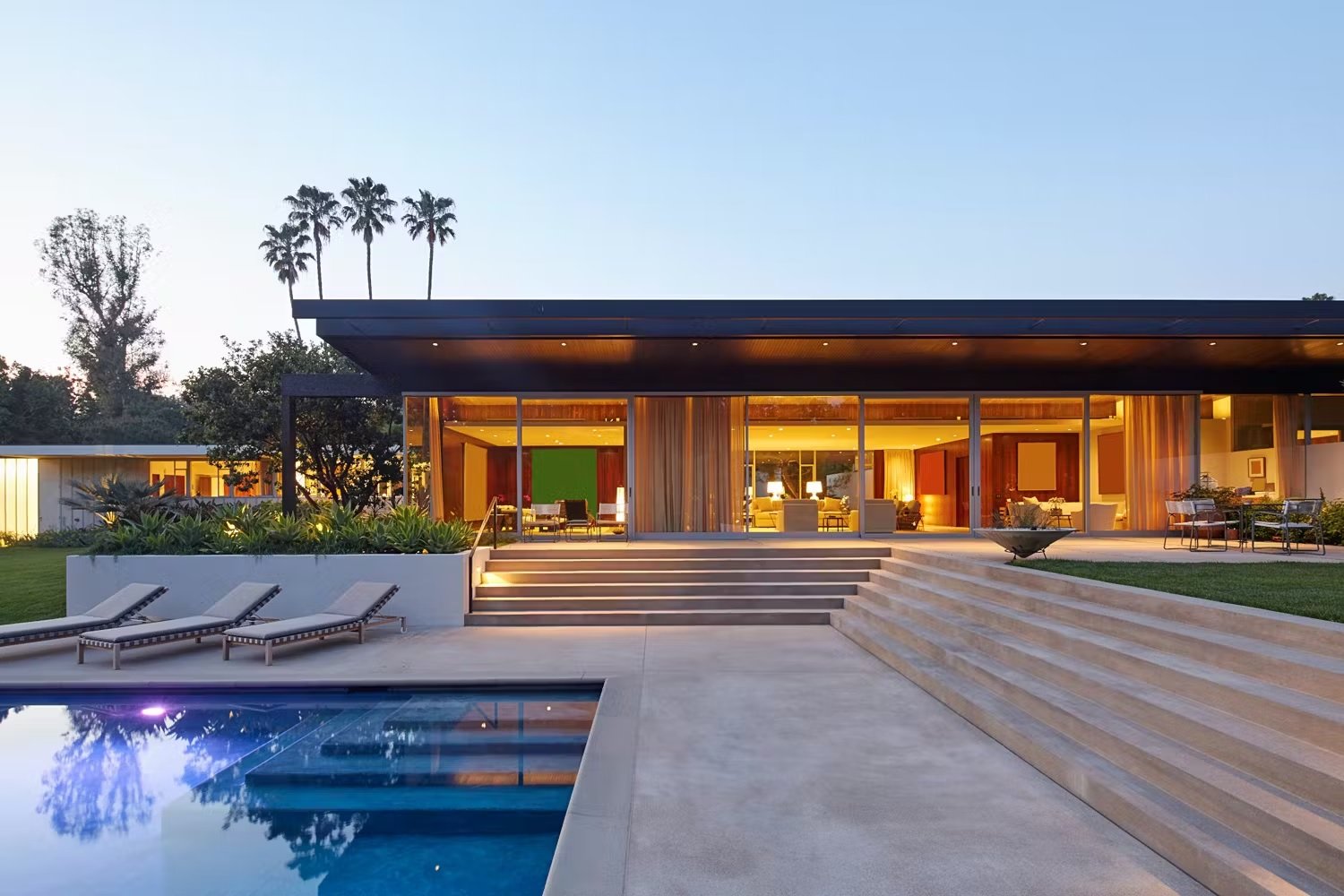International Style: Modern Los Angeles Architecture Learns from the Past
Designing a new home in Los Angeles means taking cues from the past. Discover how the International Style shaped modern home design in California and beyond.
Homes are where we come to connect, relax, and be ourselves. Walking in, we feel a little lighter and more at ease. In design, the way a home feels is directly tied to its style and the way it’s built. Today, modern Los Angeles architecture and residences take inspiration from the styles that came before. They borrow from history while reinterpreting it, and in turn, these new homes are tailored to how we want to live today.
As one of the most wide-spread and influential types of architecture, the International Style was born out of a desire to embrace and embody the modern age. With its emphasis on clean lines and functional design, it has long captivated homeowners in Los Angeles. At Bspk, our work is inspired by its timeless and elegant aesthetic.
Curious how the International Style shapes California home design today? We’re exploring the impact of this iconic architectural movement and how it continues to inform new homes like the Courtyard House.
Rethinking Modern Home Life in California
While it can be found across the world, the International Style took off in Europe during the 1920s and 30s. The minimalist and functional style emphasized open spaces and a seamless integration of indoor and outdoor living. California, known for its mild climate and affinity for new ideas, readily embraced the International Style. This led to many homes built with flat roofs, large windows, and an emphasis on easy movement inside and out. A new kind of modern Los Angeles architecture was born.
The style's focus on simplicity and versatility allowed it to adapt to California’s diverse landscapes and urban environments. A perfect example is the Kronish House by architect Richard Neutra in Beverly Hills. This spectacular International Style house features a pinwheel-shaped design with three wings that radiate out from a glass-enclosed garden. These large, expansive glass walls bring the outdoors in at every opportunity and give it a villa-like feel.
East Meets West: International Style in The Courtyard House
In the Courtyard House, we took a range of ideas from the International Style and Frank Lloyd Wright’s Prairie residences. Eastern and Western design philosophies combine to create sweeping horizontal rooflines and dramatic eaves.
The U-shaped plan maintains the feel of a single-story residence, while the center of the “U” is an open living area. This is the heart of the home, where floor-to-ceiling windows look over a pool and the namesake courtyard. Inside, it feels open and airy with a clean, straightforward aesthetic.
The International Style emphasizes open, flexible spaces that promote a sense of freedom and flow. Like in the Courtyard House, these floor plans encourage natural light to penetrate the interiors. This creates a sense of spaciousness and a seamless connection between landscapes and indoor living areas.
The resurgence of the International Style in Los Angeles comes from an appreciation for the city’s climate and a desire for more timeless home design. Homeowners can enjoy the natural beauty of Southern California and maximize the usable area of their lot.
Embracing Simplicity, Finding Beauty
At the core of the International Style is a desire for more serene and uncluttered living. Its clean lines and open spaces bring a sense of calm and order. In new Los Angeles homes, this simplicity creates spaces that are both functional and visually captivating.
The style’s revival is not about replicating the past, but rather about rediscovering and reinterpreting core principles to suit the needs of today. Projects like the Courtyard Home are a testament to Bspk’s commitment to designing homes that are elegant and functional, where you can find joy and unwind in our everyday lives.





